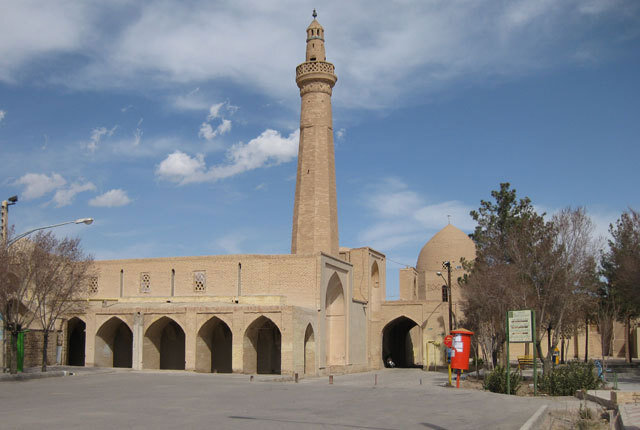Friday Mosque of Neyriz; one of the earliest in Iran

TEHRAN- Once quite flourishing in ancient times, Neyriz used to be one of the largest communities of Muslims. Located in Fars province in southern Iran, Neyriz is close to a salt lake and some stone quarries where its inhabitants are working today.
The city is home to one of the earliest mosques of Iran which is still in use as the town’s Friday Mosque with exquisite stucco work at its mihrab.
The Friday mosque of Neyriz was built at least in three phases which spanned different eras of Buyid, Seljuk, and Il-Khanid rule. An inscription on the great qibla iwan (portico) indicates that the mihrab was built in 973, which is probably the date when the qibla iwan and the minaret were also constructed and enclosed within precinct walls, according to the Islamic Architecture Community.
Identified as “iwan-mosque,” the pre-Islamic typology of the Masjid-i Jami’ in Neyriz, Bamiyan, and Nishapur has led some scholars to believe that their mihrabs and minarets may have been appended to Zoroastrian fire temples. At Neyriz, the northwest iwan facing the original sanctuary was erected at a later date, followed by the addition of two rows of lateral arcades along the courtyard and iwan walls. The portal, which bears the date 1472, commemorates the last known period of construction.
The mosque is rectangular in plan, measuring about forty-eight by thirty-four meters on the exterior. It is aligned with qibla along the northwest-southeast axis and is centered on an arcaded courtyard that is fifteen meters long and eighteen and a half meters wide. Entered from a simple portal at the northern end of the northwest facade, the courtyard is dominated by the tall sanctuary iwan that occupies its southwest wing. Eleven meters wide and seventeen meters deep, the sanctuary iwan is vaulted at a height double that of the flat-roofed courtyard arcades that continue along its sidewalls.
The archways connecting the iwan to the arcades were pierced when the latter were constructed. The sanctuary iwan also dominates the exterior appearance of the mosque with its projecting buttresses.
The mosque is made of baked bricks, covered with clay on the exterior and plastered white on the interior. The courtyard façade of the great iwan is ornamented simply with polychrome tiles composed of geometric patterns. Inside, the decorative effort is focused on the mihrab niche on the qibla wall, which is framed with multiple bands of ornate arabesques and inscriptions carved in relief out of stucco. The original minbar, probably wooden, was since replaced.
Architecturally speaking, few places can contend with the mosques that Iran has to offer. It’s the blend of geometric designs, symmetry, and vibrant colors that dazzle the eyes of visitors and locals alike.
AFM/
Leave a Comment